Mining & Exports from the Sultanate of Oman
Mr. Murali Krishnaa Vemuri started Chromite Mining and full-fledged operations in 2005. EHG have formed various entities have been founded to continue the exploration activities of operational concessions, initiate development of newly acquired concessions, operate their own concessions in an environmentally friendly manner and continue to hold significant interests in the Mining Sector in Sultanate of Oman.
The subsidiary entities have entered into long term supply contracts with Chinese State Owned Entities, Ferro Alloy Manufacturers in China & India and are exploring other International Markets.
The company has various areas of interest targeted solely for International Markets, namely:
 Chromite Ore – Metallurgical Grade – Samail & Nakhal Sites
Chromite Ore – Metallurgical Grade – Samail & Nakhal SitesThe dominate feature of the geology of Northern Oman is the Samail Ophiolite sequence. The Samail Ophiolite Nappe of Northern Oman was abducted at the close of the Tethyan Ocean during the Upper Cretaceous period approximately 90 million years ago. The sequence consists of a suite of oceanic and mantle related lithologies and occurs as the mountainous region in Northern Oman. The sequence is host to a number of mineral deposits including chromite.
The Oman Chromite deposits have two main modes of occurrence within rocks of the Samail Ophiolite namely:
- As small bodies concentrated within the uppermost 1.5 km of the Mantle Sequence, just below the base of the Cumulate Sequence; and
- As large, less abundant bodies scattered within the deeper levels of the Mantle Sequence.
Lithologies found in association with the chromites are Mantle Sequence and Cumulate Sequence rocks. The Mantle sequence consists of two main rock types: harzburgite and dunite. The Cumulate Sequence represents the lowest part of the mid-ocean ridge, consisting of ultramafic cumulates and gabbro cumulates. The chromite deposits are confined to the Mantle Sequence and the ultramafic cumulates.
The chromite deposits range in form from tabular or lenticular when least deformed, to podiform when most deformed. Most of the bodies strike parallel to regional structures in the Mantle Sequence rocks.
Chromite is the most important ore of chromium from which it derives its name. Chromium is an important metal and has a wide range of industrial uses. Chromite forms in deep ultra-mafic magmas and is one of the first minerals to crystallize. It is because of this fact that chromite is found in some concentrated ore bodies. While the magma is slowly cooling inside the Earth's crust, chromite crystals are forming and because of their density, fall to the bottom and are concentrated there.
Although its primary origin is ultra-mafic rocks such as peridotites, chromite is also found in metamorphic rocks such as serpentites. Chromite, as is indicated by its early crystallization is resistant to the altering affects of high temperatures and pressures. Thus it is capable of going through the metamorphic processes unscathed, while other minerals around it are being altered to serpentine, biotite and garnets. This characteristic also explains chromites use as a refractory component in the bricks and linings of blast furnaces.
EHG also has other mining concessions and their company activities include drilling, blasting, excavating, and transporting chromite ore and other mineral ores to Oman and UAE Ports.
 Manganese Ore
Manganese Ore
 Iron Ore
Iron Ore
 Silica
Silica
 Laterite
Laterite
 Copper Ore
Copper Ore
 Limestone
Limestone
 Talcum
Talcum
 Wollastonite
Wollastonite
We have been the recipients of the "Exporter of the Year" award for two years in succession, 2007, 2008 awarded by the Port Services Corporation of Oman for both countries, India & China.

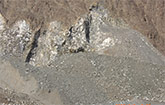
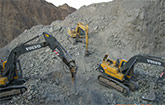

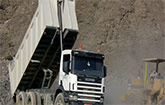
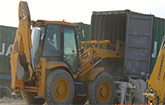
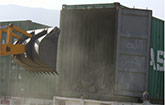
 Chromite Ore – Metallurgical Grade – Samail & Nakhal Sites
Chromite Ore – Metallurgical Grade – Samail & Nakhal Sites Manganese Ore
Manganese Ore
 Iron Ore
Iron Ore
 Silica
Silica
 Laterite
Laterite
 Copper Ore
Copper Ore
 Limestone
Limestone  Talcum
Talcum
 Wollastonite
Wollastonite



